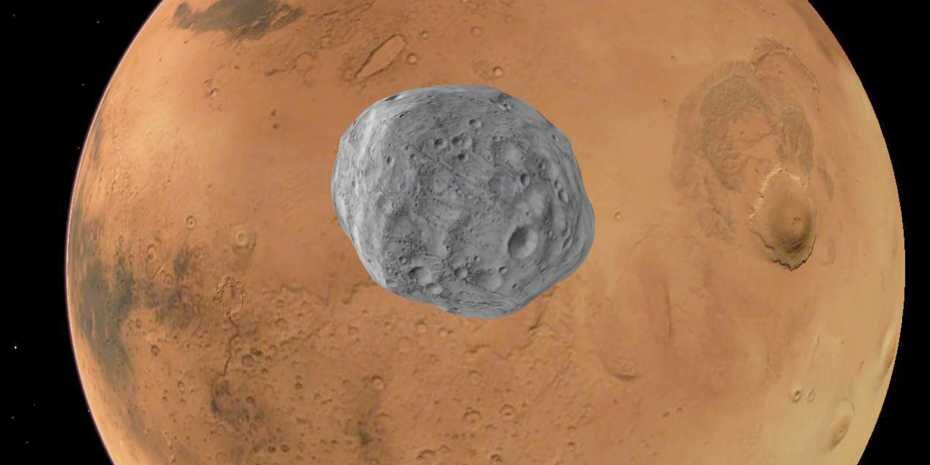Solar eclipse measured on Mars, affects interior
From phys.org:

NASA's InSight mission provides data from the surface of Mars. Its seismometer, equipped with electronics built at ETH Zurich, not only records marsquakes, but unexpectedly reacts to solar eclipses as well. When the Martian moon, Phobos moves directly in front of the sun, the instrument tips slightly to one side. This miniscule effect could aid researchers in determining the planet's interior.
An observer standing on Mars would see the planet's moon Phobos cross the sky from west to east every five hours. Its orbit passes between the sun and any given point on Mars about once each Earth year. Each time it does so, it causes from one to seven solar eclipses within the space of three days. One place where this happens is the site of NASA's InSight lander, stationed in the Elysium Planitia region since November 2018. In other words, the phenomenon occurs much more frequently than on Earth, when our moon crosses in front of the sun. "However, the eclipses on Mars are shorter—they last just 30 seconds and are never total eclipses," explains Simon Stähler, a seismologist at ETH Zurich's Institute of Geophysics. Photos taken by NASA's two Mars rovers, Opportunity and Curiosity, also show a sharp-edged lump against the backdrop of the sun.
Photographs are not the only way to observe these transits. "When Earth experiences a solar eclipse, instruments can detect a decline in temperature and rapid gusts of wind, as the atmosphere cools in one particular place and air rushes away from that spot," Stähler explains. An analysis of the data from InSight should indicate whether similar effects are also detectable on Mars.
...
What was surprising during the solar eclipse was that the seismometer tilted slightly in a particular direction. "This tilt is incredibly small," Stähler notes. "Imagine a 5-franc coin; now, push two silver atoms under one edge. That's the incline we're talking about: 10^-8." As slight as this effect was, it was still unmistakable. "The most obvious explanation would be Phobos's gravity, similar to how Earth's moon causes the tides," Stähler says, "but we quickly ruled this out." If that were the explanation, then the seismometer signal would be present for a longer period of time and every five hours when Phobos makes its pass, not only during eclipses. Researchers determined the most likely cause of the tilt: "During an eclipse, the ground cools. It deforms unevenly, which tilts the instrument," says Martin van Driel from the Seismology and Wave Physics research group.
more ...
